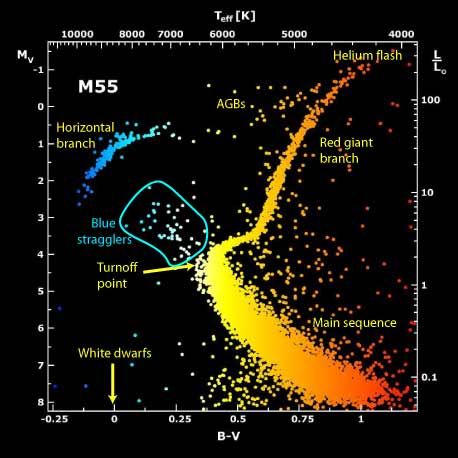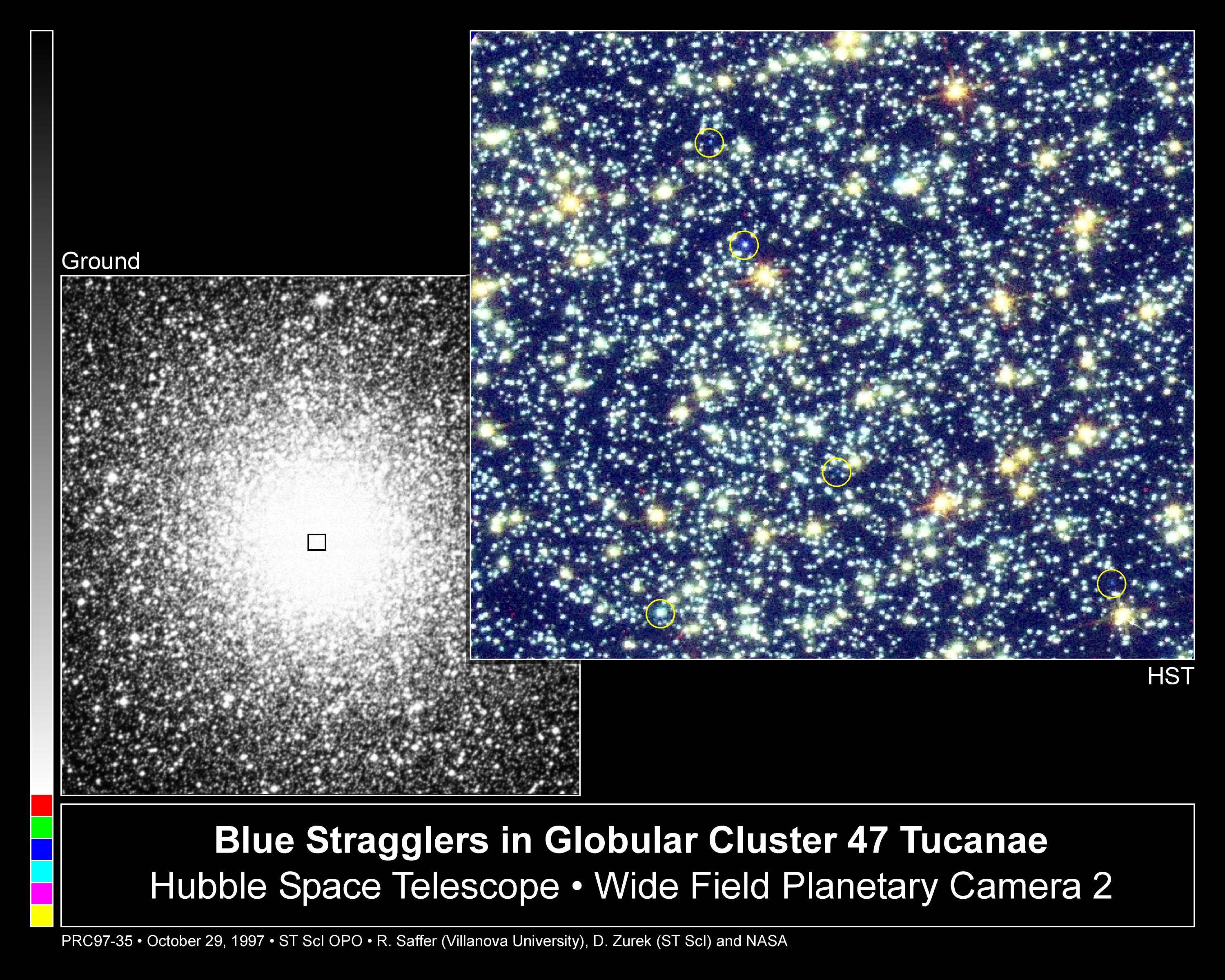Blue straggler stars are, formally, main sequence stars that are too blue and bright on the colour-magnitude diagram - they are more massive than they ought to be given their age, is the other way of looking at it.
They are found in the field, and you might rightly ponder how we can tell, but in globular clusters there are lots, they really stick out, and they are rather fascinating.
And they make great Hubble Space Telescope targets, being rather blue, in crowded regions and teach you about physics, stellar processes etc.

Nice illustration of Blue Stragglers on the Colour-Magnitude diagram in M55, from Jerjen at ANU
So there are essentially two ways to make blue stragglers:
you can "decant" a star onto a companion in a close orbit, as suggested by McCrea many years ago - this basically requires a close binary which will evolve into contact - the details are messy, but this can "clearly" happen at some level and provides a background rate for stellar rejuvenation;
or, you can have two (or more) stars go "splat" - hydrodynamic collisions between stars, either mildly hyperbolic collision during direct encounters in very dense clusters, or sup-hyperbolic collisions during binary encounters in moderate or dense clusters.
Famously, the physics of the latter process are simpler - it is rapid, and the shocks are mild, so the collision is near isentropic and the merged stellar product is essentially layered mix of the original stars, but local specific entropy.
Specific entropy within a star is generally higher in the center and lower on the outside.
On the main sequence the mean specific entropy is a monotonic function of mass, but as stars evolve onto the giant branch the mean specific entropy becomes lower.
So we mostly think we understand the structure of stars after hyperbolic hydrodynamic collisions, and their subsequent evolution, modulo rotation and magnetic fields etc.

click to embiggen
Associated press release
The decanting process, not so simple...



The pictures are gorgeous. I can't say I understand the text, but maybe I will if I keep trying.